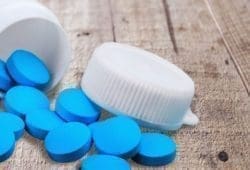
What is atherosclerosis?
Atherosclerosis causes plaque to collect in your arteries. (Plaque is made of fat, cholesterol, calcium, and other things naturally found in your blood. Arteries are blood vessels that carry blood from your heart to the rest of your body.) The plaque hardens, making your arteries narrow. Sometimes arteries become completely blocked with plaque. This limits how much blood can flow to the rest of your body.
Atherosclerosis is the primary cause of cardiovascular disease. It’s a slow disease that may get worse as you get older. It’s sometimes called “hardening of the arteries.”
Symptoms of atherosclerosis
Many people don’t know they have atherosclerosis until they have a medical emergency caused when blood can’t get through the arteries. This can cause chest pain, breathing difficulties, and stroke. Some people also have issues with their kidneys, intestines, and legs.
What causes atherosclerosis?
Doctors don’t know what causes atherosclerosis. However, it may first develop when the inner layers of your arteries become damaged. Many things can cause this damage, including:
- High blood pressure
- High cholesterol
- Diabetes
- Obesity or being overweight
- Smoking and tobacco use
- Unhealthy diet
- Lack of exercise
- Family history of heart disease
How is atherosclerosis diagnosed?
Your doctor will talk with you about your family history. They also will do a physical exam. This exam may include listening to your heart or other areas of high blood flow. Certain sounds may indicate you have a problem with blood flowing through your arteries. Your doctor also may check your pulse in your leg or foot. This will show them how well your blood is traveling through your arteries. If they feel a weak pulse or no pulse in one of those areas, it may mean you have a blocked artery.
Your doctor may order tests to check for atherosclerosis. These may include:
- This uses dye and X-rays to show the inside of your arteries.
- Blood tests.These check what is in your blood, including cholesterol.
- Chest X-ray.This takes a picture of the inside of your chest.
- CT scan.This takes digital pictures of your heart.
- This takes a picture of your heart as it’s moving.
- Electrocardiogram (EKG).This test checks the beats and rhythm of your heart.
- Stress test. This monitors your heart as you exercise.
Can atherosclerosis be prevented or avoided?
An important way to prevent atherosclerosis is by living a healthy lifestyle. Maintain a healthy weight, eat a balanced diet, and exercise. These changes may help you lose weight (if necessary), lower your LDL “bad” cholesterol, increase your HDL “good” cholesterol, and lower your blood pressure. They may also help control your blood sugar, which is important if you have diabetes.
If you smoke, stop smoking. This is the most important step you can take to decrease your risk of atherosclerosis.
Your doctor has a way to calculate your risk of developing atherosclerosis based on your age, sex, cholesterol levels, blood pressure, and other factors. If you’re at higher risk, your doctor may recommend you take a statin. Statins are medicines that slow down your body’s production of cholesterol. They also remove cholesterol buildup from your arteries.
Atherosclerosis treatment
Your doctor will likely recommend lifestyle changes, such as a healthy diet and exercise, to treat atherosclerosis. If those don’t work, they may prescribe medicines to lower your blood pressure and cholesterol levels. For example, if you are 50 to 59 years of age and have a high risk for heart disease, your doctor may want you to take a low dose of aspirin each day. Aspirin helps keep your blood from forming clots that can clog your arteries. However, it isn’t appropriate for everyone. Don’t start taking aspirin without talking to your doctor first.
If you have severe atherosclerosis or have been diagnosed with cardiovascular disease, your doctor may recommend a procedure to open your blocked arteries or surgery to go around (bypass) the blockage.
Living with atherosclerosis
Living a healthy lifestyle can lower your risk of atherosclerosis.
- Eat a heart-healthy diet. A heart-healthy diet includes a variety of fresh fruits and vegetables, whole grains, fish, lean meats, and “good” fats. A Mediterranean diet is an example of a heart-healthy diet.
- Exercise. This can help you lose weight if you’re overweight or have obesity. It can also help you maintain a healthy weight. Exercise helps raise your HDL cholesterol and lower your LDL cholesterol. Try to work up to an average of 40 minutes of moderate-to-vigorous physical activity 3 to 4 times a week. Talk to your doctor before starting an exercise plan.
- Quit smoking. Smoking can damage your blood vessels, reduce the flow of blood through them, and lower your HDL cholesterol. Even exposure to secondhand smoke can affect your blood vessels and cholesterol. Talk to your doctor about developing a plan to help you stop smoking.
- Manage stress. Try to reduce your stress. You can do that by deep breathing and relaxation techniques. Examples include meditation and gentle exercise (such as walking or yoga). Also talking with a friend, family member, or health care professional may be helpful.
Questions for your doctor:
- Am I at risk for atherosclerosis?
- What changes can I make to reduce my risk?
- Do I need any tests for atherosclerosis?
- Do I have high cholesterol?
- What is the likely cause of my atherosclerosis?
- How much plaque has built up in my arteries?
- How does my diet contribute to atherosclerosis?
- Am I at risk for heart attack or other complications?
- Do I need medicine? Surgery?
![]()
Copyright © American Academy of Family Physicians
This information provides a general overview and may not apply to everyone. Talk to your family doctor to find out if this information applies to you and to get more information on this subject.









